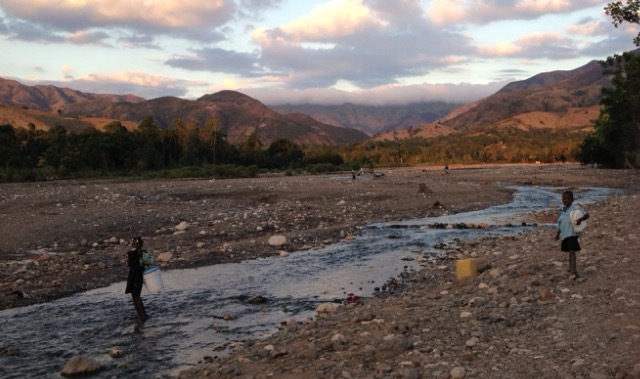Reflection: “The Poorest Country in the Western Hemisphere”
Proud Beginnings
In many ways, the new world’s first free country was not the United States, where much of the population was enslaved. The first free country was Haiti, roughly the size of Maryland and located in the Caribbean, at its peak Haiti was the most prosperous colony in the world which enabled France, and other Western nations, to acquire wealth at the expense of its own development.
The native Taíno Indians were eradicated by Columbus then replaced by African slaves who were brought over to work the island’s land. After years of brutal violence and dehumanization, these slaves fought against their French masters in what became the world’s first successful slave revolt and the second liberated colony, just after the United States.
The country named itself using a Taíno word, in homage to the island’s ancestors. From 1804 on, Haiti stood ready to defend itself from the many Western powers that wanted to claim it as their own. The French defeat at the battle of Vertieres on November 18th, 1803 convinced Napoleon to sell the Louisiana Purchase to the US and inspired the American abolitionists. With Haitian aid and inspiration, Simón Bolívar also liberated Venezuela, Bolivia, Colombia, Ecuador, Peru, and Panama.

A History of Structural Violence
Today, Haiti’s story is often limited to its poverty. “The poorest country in the western hemisphere” seems to have become a suffix to its name. It is important to understand, however, that the struggles Haiti endures now are a product of the structural forces it has faced throughout its past.
Haiti’s colonial legacy left the island depleted, as racism and the desire to maintain the global slave trade system kept Haitians from prospering. France forced the new nation to pay reparations for the damage it incurred during the rebellion, and world leaders refused to recognize Haiti economically or diplomatically for decades. This crippled Haitian leaders’ power internationally and incentivized them to exploit their people.
Brutal dictator François “Papa Doc” Duvalier was supported by the US, despite the fact that his private army killed and tortured thousands of Haitians who dared to speak against him from the 1960s through 1980s. The 1990s and early 2000s saw military coups and instability after the triumph of its first successful democratic transition to power.
In 2010, the capital experienced the worst urban disaster in modern history when a 7.0 magnitude earthquake and dozens of aftershocks killed an estimated 300,000 and displaced more than 1.5 million people. Now, after over a year of delays and fraud accusations, Haiti has successfully conducted the first round of its presidential elections on November 20 2016, just weeks after Hurricane Matthew devastated much of the island.
A New Narrative
For every instance of injustice or tragedy in its history, Haiti has shown just as much strength and resiliency. Perhaps it is time we consider developing countries with more nuance.
Instead of discounting them as simply murder capitals, hubs of human trafficking, or the poorest in the hemisphere, it is necessary to recount the beauty and resilience in their pasts and to uncover the troubling instances of powerful nations’ influence on their futures. Haiti, and countries like it, have more to offer than poverty.
About the Author:
 Corinne Paul is an undergraduate student studying Government and Politics with minors in United States Latina/o Studies, International Development and Conflict Management at the University of Maryland. She is also pursuing a Masters of Public Policy with a specialization in International Development at the University of Maryland School of Public Policy. She is interested in Haiti, immigration, and international women’s empowerment.
Corinne Paul is an undergraduate student studying Government and Politics with minors in United States Latina/o Studies, International Development and Conflict Management at the University of Maryland. She is also pursuing a Masters of Public Policy with a specialization in International Development at the University of Maryland School of Public Policy. She is interested in Haiti, immigration, and international women’s empowerment.
